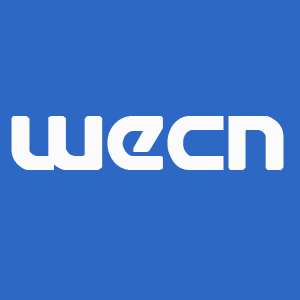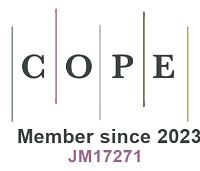Electrospun nanofiber membranes for the control of micro/nanoplastics in the environment
Abstract
In recent years, the environmental pollution caused by micro/nanoplastics (MNPs) has increased. As a result of their negative impact on human health and the environment, MNPs have emerged as new scientific challenges. However, there are still some inconclusive findings. In this perspective, we analyze the traditional membrane performance that is thought to be applicable for MNPs removal, intending to highlight the electrospun nanofiber membrane as a potential next-generation feasible membrane technique. However, the lack of inter-comparability across studies and the limited data sources account for the high level of uncertainty associated with the application of electrospun nanofiber membranes in the control of MNPs pollution. Hence, we propose a long-term road map for controlling MNPs pollution in the environment with electrospun nanofiber membranes, which will assist in mitigating the difficulties encountered during the experimental stages.
Keywords
BACKGROUND
In recent years, the aquatic environment has been contaminated by the ubiquitous existence of micro/nanoplastics (MNPs), which are identified as emerging pollutants due to their potential threats to environmental systems and public health[1]. It is known that massive amounts of MNPs are being generated from different sources, such as the washing of textile products, cosmetics and personal care products, emissions from plastic production plants, and the fragmentation of plastic debris lost or abandoned in land or maritime activities[2]. MNPs have chemical characteristics that are rather stable, and they are also difficult to decompose; thus, they may persist for a considerable amount of time in the environment. It is generally agreed that wastewater treatment plants are among the principal sources that release MNPs into the surrounding aquatic environment[3]. MNPs may be remedied primarily via the use of two fundamental techniques: degradation and separation. MNPs can be removed through various degradation techniques such as biological, photoaging, and mechanical processes, but these methods have their drawbacks; for example, the leaching of MNPs remaining after degradation poses a health and ecosystem risk[4]. Conversely, various physical separation technologies, e.g., coagulation, dissolved air flotation, sand filtration, membrane disc-filters, and membrane filtration, have been applied for MNPs removal. Among them, membrane filtration has been identified as a viable option for MNPs removal over other relevant conventional methods because it is easily scalable, highly efficient, and can be retrofitted with minimal expenditure[5].
ARE CONVENTIONAL MEMBRANE TECHNOLOGIES ABLE TO CONTROL MNPS IN THE ENVIRONMENT?
More recently, the removal of MNPs through the use of conventional membrane-based technologies such as micro-, ultra-, and nanofiltration, reverse osmosis, and membrane bioreactors has been studied and exhibited a better removal performance (> 99%) compared to other techniques[6]. However, it is important to keep in mind that the effectiveness of membrane filtration is influenced by a variety of parameters, including membrane materials, shape, size, surface area, and wettability. Particularly, conventional membrane pore sizes are not convenient for some pollutant removal due to their size variation (retention is challenging). Besides, conventional membrane filtration suffers from higher costs and poor quality of process intensification, which eventually influence their operation facility setup and performance. Therefore, developing novel membranes with desired characteristics is of primary importance in controlling MNPs pollution.
HOW COULD ELECTROSPUN NANOFIBER MEMBRANE BE A FRONTIER CHOICE FOR MNPS REMOVAL?
Nanofiber membranes are superior to conventional membranes in terms of selectivity, mechanical stability, hydrophilicity, large surface area, and water flow resistance. The electrospinning technique has been widely used to produce nanofiber membranes over the last few decades because of its flexibility, diversity, and effectiveness. The fascinating aspect of this technique is to prepare different sizes and shapes of electrospun nanofiber membranes with porous characteristics, which allows them to be used in purifying water from various sources such as drinking water, surface water, and sewage effluent[7-11]. Electrospun nanofiber membranes have been used in the pressure-driven membrane filtration process (microfiltration, ultrafiltration, nanofiltration, and reverse osmosis) because of their highly porous nature, which significantly reduces the energy required for filtration[12]. Additionally, electrospun membranes’ large specific surface area may provide additional adsorption sites; accordingly, several studies employed electrospun nanofiber membranes as an effective adsorbent to capture pollutants. Moreover, electrospun nanofiber membranes have been used for small particulate matter removal, such as PM10 (< 10 µm), PM2.5 (< 2.5 µm), and PM1.0 (< 1 µm), over the last few decades due to their size exclusion mechanism. Therefore, based on the abovementioned success of electrospun nanofiber membranes, the removal of MNPs using electrospun nanofiber membranes seems to be a potential solution to the environmental remediation community.
Until now, very few studies have considered MNPs removal using electrospun nanofiber membranes[13-15], whereby only one research article was published by Wang et al.[16]. The removal process works exactly the same way as it does with traditional membranes: the membrane captures the suspended MNPs and allows water to pass through it. It has an efficiency of about 90% in the removal of MPs in wastewater with a particle size of 50 nm. The electrospun membrane, which has a positive charge and can remove MPs of varying sizes, also has a high flux and a low susceptibility to fouling[16]. As the nanofiber membrane adsorbs the MPs, the high retention rate decreases the amount of permeate that could pass through it. This was most likely the result of pore blocking and cake formation and caused an overall reduction in throughput of permeate. However, to better understand the removal process of MPs using electrospun nanofiber membranes, further research is needed.
WHAT ARE THE FUTURE CHALLENGES FOR CONTROLLING MNPS IN WATER MEDIA?
Traditional membranes are plagued by membrane fouling and possible chemical damage, which increases overall costs due to the need for post-treatments such as cleaning and regeneration. Besides, the efficacy of the membrane’s filtration is decreased as a result of the MNPs being trapped on the membrane surface. Accordingly, it is suggested that modulation of the membrane surface characteristics is one of the potential solutions to reducing membrane fouling to some extent. The performance of electrospun nanofiber membranes could be enhanced by conducting pre-modification during the membrane fabrication stage and post-modification on the deposited membrane surface [Figure 1]. In situ modification is the most straightforward way to incorporate functionalizing agents into the spinning solution for the pre-modification technique, which results in new formulations of membranes with distinctive properties[17-19]. Another fascinating chemical method is called ligand engineering, and it involves the addition of organic or inorganic ligands to the spinning solution before it is loaded into the electrospinning machine, as well as the fabrication of membranes that contain ligands that change the properties of the membranes, such as the pore size, thickness, and surface area. Most importantly, adjusting the structure of the organic ligands influences their adsorption performance. This is accomplished by providing active sites on the edge surface of the organic ligands through the binding affinity of the MNPs substances[20,21]. In addition, the use of biopolymers in electrospinning, known as bio-electrospinning, could be a feasible option for developing an efficient nanofiber membrane for MNPs removal in the context of sustainability.
The post-electrospinning modification process has the potential to be a significant and efficient tool for performance enhancement. Plasma treatment is a conventional physical post-modification approach often employed to modify membrane surface characteristics. Surface adhesion, roughness, and wetting qualities may all be manipulated via plasma treatment, which is most often used. It is an effective method of surface modification that does not need the use of any solvents. Surface modification with plasma treatment is the most efficient and environmentally friendly option available for developing clean technologies[22]. During processing, ultrasonication is the most effective way of scissoring an electrospun membrane into short fibers, which is more appropriate for obtaining higher adsorption capacity[23]. Altering the surface chemistry of electrospun fibers could also be accomplished by adapting more conventional sterilization techniques, such as ultraviolet (UV) irradiation, which is relatively inexpensive and well-known. This would maintain the electrospun fibers’ morphology and alignment. In particular, UV irradiation makes it possible to produce a wide variety of radical groups on the surface of electrospun fibers. These radical groups can then be used in further grafting reactions that are specifically tailored to the fibers’ needs for wastewater treatment purposes. This idea is essential because nanomembrane filtration can work more effectively in removing MNPs by virtue of the superior properties. Therefore, this perspective is putting forward a new research and development roadmap for effective MNPs removal using electrospun nanofiber membranes. In our view, electrospun nanofiber membranes can reach a milestone in controlling MNPs pollution in water in the next decades.
DECLARATIONS
AcknowledgementsWe would like to express our sincere gratitude to the support from the Sanitary Environmental Engineering Division (SEED) and grants (FARB projects) from the University of Salerno, Italy, coordinated by Prof. Naddeo V. The PhD School in “Risk and Sustainability in Civil Engineering, Environmental and Construction” is also acknowledged for the scholarships (cycle-XXXIV) of Pervez MN.
Authors’ contributionsConceptualization, methodology, writing - original draft preparation: Pervez MN, Mishu MR, Talukder ME, Naddeo V
Writing - review and editing: Stylios GK, Buonerba A, Hasan SW, Cai Y, Zhao Y, Figoli A, Zarra T, Belgiorno V, Naddeo V
Supervision: Naddeo V
Read and agree to the published version of the manuscript: Pervez MN, Mishu MR,Talukder ME, Stylios GK, Buonerba A, Hasan SW, Cai Y, Zhao Y, Figoli A, Zarra T, Belgiorno V, Naddeo V
Availability of data and materialsNot applicable.
Financial support and sponsorshipNone.
Conflicts of interestAll authors declared that there are no conflicts of interest.
Ethical approval and consent to participateNot applicable.
Consent for publicationNot applicable.
Copyright© The Author(s) 2022.
REFERENCES
1. Allen S, Allen D, Karbalaei S, Maselli V, Walker TR. Micro(nano)plastics sources, fate, and effects: what we know after ten years of research. J Hazard Mater Adv 2022;6:100057.
2. Picó Y, Barceló D. Micro(Nano)plastic analysis: a green and sustainable perspective. J Hazard Mater Adv 2022;6:100058.
3. Souza AMD, Santos AL, Araújo DS, Magalhães RRDB, Rocha TL. Micro(nano)plastics as a vector of pharmaceuticals in aquatic ecosystem: historical review and future trends. J Hazard Mater Adv 2022;6:100068.
4. Liu P, Shi Y, Wu X, et al. Review of the artificially-accelerated aging technology and ecological risk of microplastics. Sci Total Environ 2021;768:144969.
5. Pizzichetti ARP, Pablos C, Álvarez-fernández C, Reynolds K, Stanley S, Marugán J. Evaluation of membranes performance for microplastic removal in a simple and low-cost filtration system. Case Stud Therm Eng 2021;3:100075.
6. Akarsu C, Kumbur H, Kideys AE. Removal of microplastics from wastewater through electrocoagulation-electroflotation and membrane filtration processes. Water Sci Technol 2021;84:1648-62.
7. Fahimirad S, Fahimirad Z, Sillanpää M. Efficient removal of water bacteria and viruses using electrospun nanofibers. Sci Total Environ 2021;751:141673.
8. Pervez MN, Stylios GK, Liang Y, Ouyang F, Cai Y. Low-temperature synthesis of novel polyvinylalcohol (PVA) nanofibrous membranes for catalytic dye degradation. J Clean Prod 2020;262:121301.
9. Pervez MN, Talukder ME, Mishu MR, et al. One-step fabrication of novel polyethersulfone-based composite electrospun nanofiber membranes for food industry wastewater treatment. Membranes (Basel) 2022;12:413.
10. Pervez MN, Stylios GK. Investigating the synthesis and characterization of a novel “Green” H2O2-assisted, water-soluble chitosan/polyvinyl alcohol nanofiber for environmental end uses. Nanomaterials (Basel) 2018;8:395.
11. Hmtshirazi R, Mohammadi T, Asadi AA, Tofighy MA. Electrospun nanofiber affinity membranes for water treatment applications: a review. J Water Process Eng 2022;47:102795.
12. Kugarajah V, Ojha AK, Ranjan S, et al. Future applications of electrospun nanofibers in pressure driven water treatment: a brief review and research update. J Environ Chem Eng 2021;9:105107.
13. Hanif MA, Ibrahim N, Dahalan FA, Md Ali UF, Hasan M, Jalil AA. Microplastics and nanoplastics: recent literature studies and patents on their removal from aqueous environment. Sci Total Environ 2022;810:152115.
14. Mohana AA, Farhad SM, Haque N, Pramanik BK. Understanding the fate of nano-plastics in wastewater treatment plants and their removal using membrane processes. Chemosphere 2021;284:131430.
15. Joo SH, Liang Y, Kim M, Byun J, Choi H. Microplastics with adsorbed contaminants: mechanisms and treatment. Environmental Challenges 2021;3:100042.
16. Wang R, Zhang L, Chen B, Zhu X. Low-pressure driven electrospun membrane with tuned surface charge for efficient removal of polystyrene nanoplastics from water. J MEMBRANE SCI 2020;614:118470.
17. Sagitha P, Reshmi C, Sundaran SP, Sujith A. Recent advances in post-modification strategies of polymeric electrospun membranes. Eur Polym J 2018;105:227-49.
18. Talukder ME, Pervez MN, Jianming W, et al. Chitosan-functionalized sodium alginate-based electrospun nanofiber membrane for as (III) removal from aqueous solution. J Environ Chem Eng 2021;9:106693.
19. Talukder ME, Pervez MN, Jianming W, et al. Ag nanoparticles immobilized sulfonated polyethersulfone/polyethersulfone electrospun nanofiber membrane for the removal of heavy metals. Sci Rep 2022;12:5814.
20. Li J, Wang H, Yuan X, Zhang J, Chew JW. Metal-organic framework membranes for wastewater treatment and water regeneration. Coord Chem Rev 2020;404:213116.
21. Pervez MN, Wei Y, Sun P, Qu G, Naddeo V, Zhao Y. α-FeOOH quantum dots impregnated graphene oxide hybrids enhanced arsenic adsorption: the mediation role of environmental organic ligands. Sci Total Environ 2021;781:146726.
22. Correia D, Ribeiro C, Sencadas V, et al. Influence of oxygen plasma treatment parameters on poly(vinylidene fluoride) electrospun fiber mats wettability. Prog Org Coat 2015;85:151-8.
Cite This Article
How to Cite
Download Citation
Export Citation File:
Type of Import
Tips on Downloading Citation
Citation Manager File Format
Type of Import
Direct Import: When the Direct Import option is selected (the default state), a dialogue box will give you the option to Save or Open the downloaded citation data. Choosing Open will either launch your citation manager or give you a choice of applications with which to use the metadata. The Save option saves the file locally for later use.
Indirect Import: When the Indirect Import option is selected, the metadata is displayed and may be copied and pasted as needed.



















Comments
Comments must be written in English. Spam, offensive content, impersonation, and private information will not be permitted. If any comment is reported and identified as inappropriate content by OAE staff, the comment will be removed without notice. If you have any queries or need any help, please contact us at [email protected].